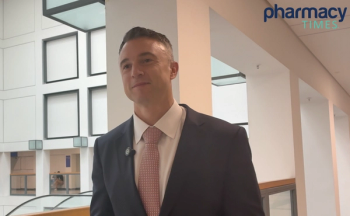
Independent Oncology Practices Could Lower Health Care Costs
Cancer care at hospitals is significantly more expensive than at community oncology clinics.
A new report published by the Community Oncology Alliance (COA) found that the cost of chemotherapy for patients with cancer was nearly 60% more expensive at hospitals than at independent, community oncology practices. The difference in treatment location could cost patients up to $90,144 per year for treatment.
Patients receiving care at the hospital were also more likely to visit the emergency department (ED) after treatment, according to the study.
For several cancer types, the authors found that the total cost of care for patients treated with chemotherapy in a hospital was $20,060, while the same treatment administered in an independent, community oncology clinic was only $12,548—nearly twice the price.
The investigators discovered that chemotherapy was 71% higher per month at a hospital compared with a community oncology practice, costing $8443 and $4933, respectively. Costs related to physician visits totaled an overwhelming 333% more at a hospital compared with a community practice, a price difference of $3316 versus $765, according to the study.
Additionally, ED visits were more common among patients after undergoing chemotherapy in a hospital outpatient setting. Within 72 hours of treatment, 3.6% of patients treated at a hospital and 2.6% of patients treated in a community clinic visited the ED, a 40% difference.
The authors discovered these findings were consistent across breast,
Specifically, the total cost of care for breast cancer was 66% higher ($7680 more) per month in a hospital, while lung cancer care was 54% higher ($9414 more) per month in the hospital compared with community practices, according to the study. Colorectal cancer treatment was 46% higher ($7264 more) per month in a hospital.
Notably, these findings were observed regardless of whether a therapy was branded, generic, or a combination of the 2, according to the authors.
“As a physician, I am constantly concerned about the financial toxicity of cancer care. It is disappointing again to see data that hospital-based cancer care is considerably more expensive than the community practices. While, at the same time, more patients are being forced into hospitals,” said lead researcher Lucio Gordan, MD. “Providers, payers, policymakers, and patients need to take a long hard look at the impact that site of care has on cancer patients, not just in terms of the cost, but also outcomes, quality of care, and satisfaction. It is clear that the community oncology setting should be the preferred, first choice treatment setting for cancer patients.”
The authors report that the new findings are consistent with more than 10 previous studies that found the cost of cancer care was 38% higher for patients treated at a hospital compared with community practices.
These findings may be concerning due to the increased hospital acquisition of community oncology clinics, leading to diminished access to lower-cost therapy, according to the study.
A driving reason for cancer care shifting towards hospitals is the 340B Drug Discount Program, which provides outpatient drugs at discounted prices to health care organizations that treat low-income and uninsured patients, according to the authors. COA reported that 74.5% of the acquisitions of community oncology clinics were by hospitals with 340B drug discount pricing in 2014 and 2015.
“More than a decade of data have consistently shown that hospitals are a tremendous driver of excessive spending on cancer care,” said Ted Okon, executive director of COA. “Congress and the administration need to step forward and address this by reining in abuses of the 340B program and implementing site payment parity. It is crazy that our country continues to push more and more cancer care into the much more expensive hospital setting as we seek ways to reduce runaway health care spending.”
Newsletter
Stay informed on drug updates, treatment guidelines, and pharmacy practice trends—subscribe to Pharmacy Times for weekly clinical insights.




















































































































































































































